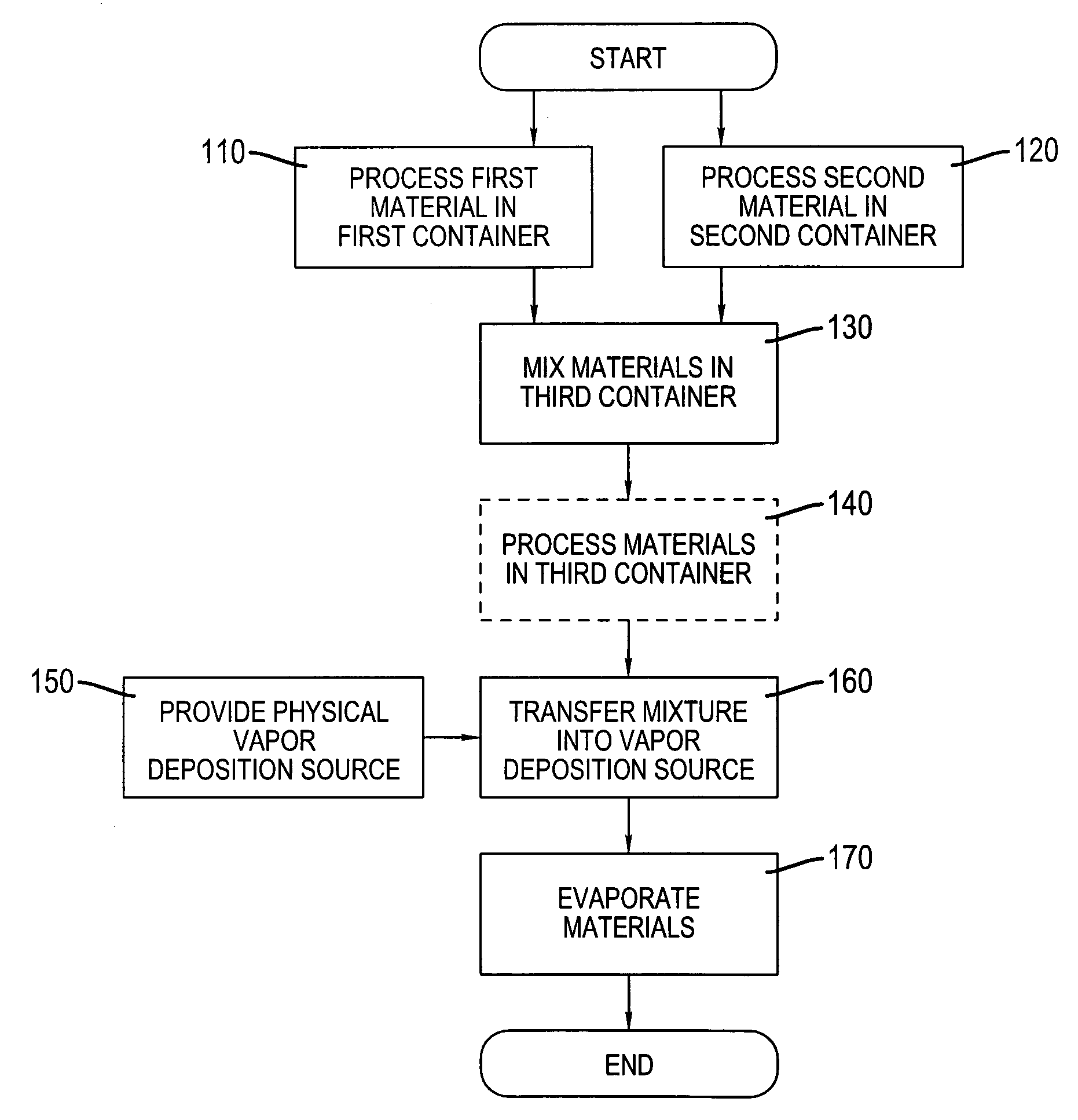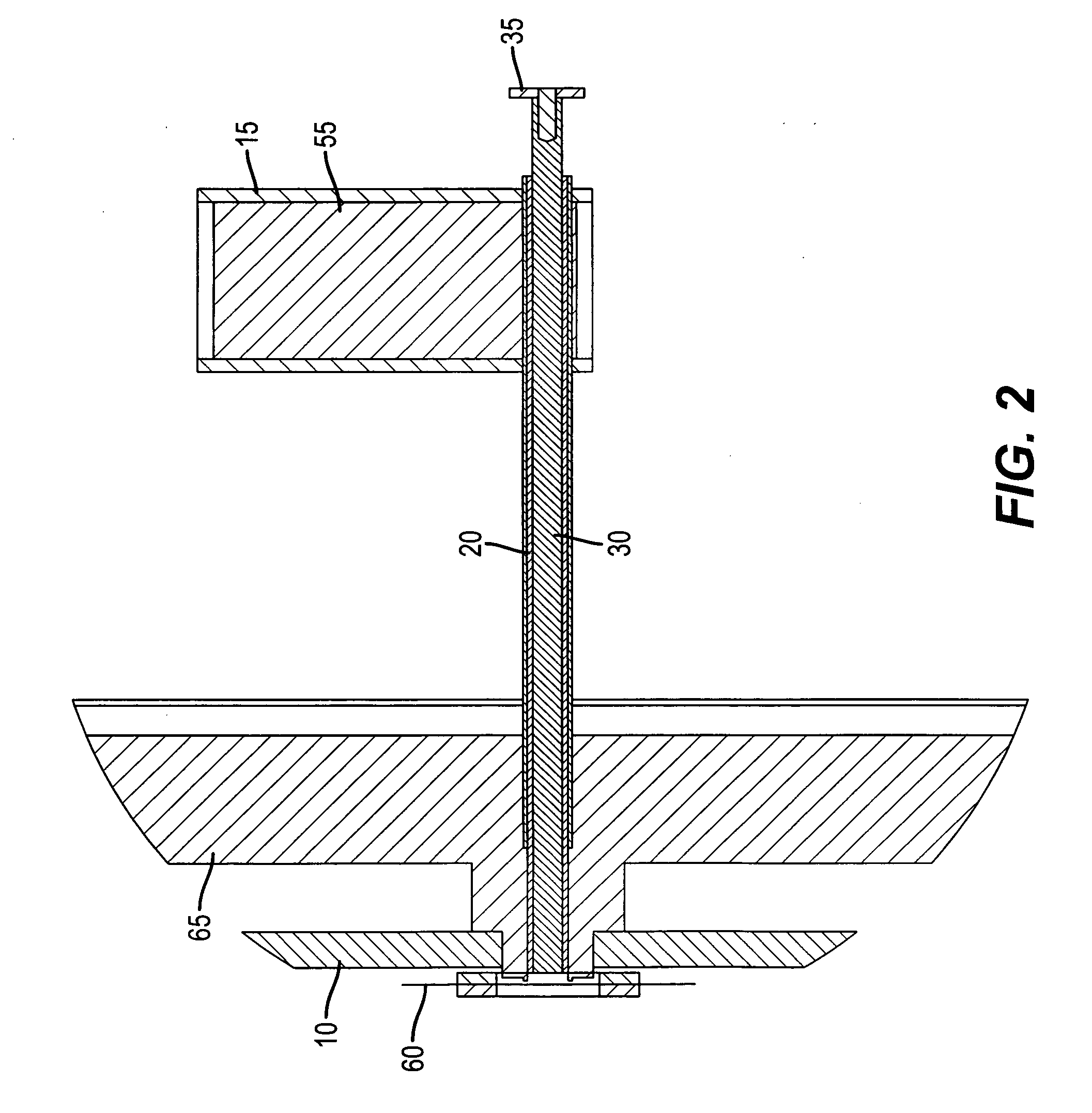Purifying organic materials for physical vapor deposition
a technology of organic materials and physical vapor deposition, which is applied in the direction of vacuum evaporation coating, chemical vapor deposition coating, coating, etc., can solve the problems of difficult to provide and maintain organic materials in a relatively high purity state, changes in the structure of molecules, and associated changes in material properties, so as to improve device performance, reduce contamination, and steady vaporization rate
- Summary
- Abstract
- Description
- Claims
- Application Information
AI Technical Summary
Benefits of technology
Problems solved by technology
Method used
Image
Examples
Embodiment Construction
[0041] The organic layers of an OLED display include at least one organic or organo-metallic material that produces light, known as electroluminescence (EL), as a result of electron-hole recombination in the layer. Hereinafter, the term “organic” will be taken to include both purely organic as well as organo-metallic materials.
[0042] Turning now to FIG. 2, there is shown a cross-sectional view of one embodiment of a portion of an apparatus for feeding and evaporating powdered organic materials comprising multiple components. Such an apparatus is a thermal physical vapor deposition source and has been described by Long et al. in above-cited U.S. patent application Ser. Nos. 10 / 945,940 and 11 / 134,654. An auger structure 30 moves organic material 55 from a feed vessel 15 along a feeding path 20 into a manifold 10 and a heating element 60, which can be e.g. a heated screen. A base 65 is a heat-dissipating structure to prevent much of the heat from heating element 60 from traversing the...
PUM
| Property | Measurement | Unit |
|---|---|---|
| temperatures | aaaaa | aaaaa |
| temperature | aaaaa | aaaaa |
| temperature | aaaaa | aaaaa |
Abstract
Description
Claims
Application Information
 Login to View More
Login to View More - R&D
- Intellectual Property
- Life Sciences
- Materials
- Tech Scout
- Unparalleled Data Quality
- Higher Quality Content
- 60% Fewer Hallucinations
Browse by: Latest US Patents, China's latest patents, Technical Efficacy Thesaurus, Application Domain, Technology Topic, Popular Technical Reports.
© 2025 PatSnap. All rights reserved.Legal|Privacy policy|Modern Slavery Act Transparency Statement|Sitemap|About US| Contact US: help@patsnap.com



